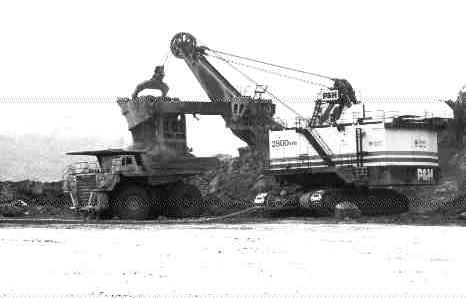Vancouver —
The drilling is part of a 10-hole, 5,200-metre campaign aimed at expanding the existing resource at Kemess North, which stands at 360 million tonnes grading 0.154% copper and 0.3 gram gold. Northgate budgeted $500,000 for the program, which began in early June.
Results from hole 11, the program’s best hole so far, has prompted Northgate to sink six more holes before the onset of winter.
Hole 11 cut 248 metres (from a down-hole depth of 146.3 metres) grading 0.4% copper and 0.91 gram gold per tonne, including 146 metres (from 246.3 metres down-hole) grading 0.53% copper and 1.3 grams gold, as well as 100 metres (from 294.3 metres) of 0.6% copper and 1.54 grams gold.
“Weather permitting, we will continue drilling to the end of October in order to delineate the expanding high-grade zone,” says Ken Stowe, Northgate’s chief executive officer. “Hole 11 continues to confirm the trend of increasing grades and gold-copper ratios, as the drilling moves northeast of the area of last year’s exploration program.”
Six of the program’s holes were collared outside the previously reported mineral inventory for the project. Results from recent drilling are as follows:
– Hole 1 cut 521.1 metres grading 0.19% copper and 0.29 gram gold per tonne, starting at a down-hole depth of 64.1 metres. Included was an 84-metre interval that averaged 0.43% copper and 0.5 gram gold.
– Hole 2 intersected 414.2 metres grading 0.21% copper and 0.33 gram gold starting at 140.5 metres down-hole, including a 94.6-metre section that averaged 0.35% copper and 0.49 gram gold.
– Hole 3 intersected 498.6 metres averaging 0.21% copper and 0.39 gram gold, starting at 100.6 metres down-hole, including a 306.8-metre section that assayed 0.25% copper and 0.48 gram gold.
– Hole 4 cut 312.2 metres grading 0.24% copper and 0.43 gram gold starting at 260.3 metres down-hole.
– Hole 6 cut 571.8 metres grading 0.2% copper and 0.4 gram gold starting 25.9 metres down-hole, including a 186.6-metre interval that averaged 0.28% copper and 0.6 gram gold.
– Hole 7 cut 306.3 metres grading 0.30% copper and 0.66 gram gold, starting at 192.6 metres down-hole. This included a 209.8-metre section that averaged 0.37% copper and 0.82 gram gold.
– Hole 8 was lost before it intersected the target.
– Hole 9 cut 192.7 metres averaging 0.26% copper and 0.62 gram gold, starting at 205.7 metres down-hole.
– Hole 10 intersected 309.8 metres grading 0.39% copper and 0.87 gram gold, starting at 182 metres down-hole, including a 132-metre interval that averaged 0.22% copper and 0.36 gram gold, as well as a 127-metre section that ran 0.51% copper and 1.25 grams gold.
“The discovery of much higher-grade mineralization enhances the potential of Kemess North to add significantly to our ore reserve base,” says Stowe.
Northgate is currently mining the Kemess South open pit, which hosts proven reserves of 146 million tonnes grading 0.24% copper and 0.65 gram gold. The mine is expected to produce an average of 260,000 oz. gold and 74 million lbs. of copper over its remaining 8-year life.
According to the company, the new mineralization remains open in all directions, with the gold-to-copper ratios increasing to the northeast. Also, a trend is developing where the copper and gold grades increase with depth.
The company recently signed a 2-year sales agreement with
A one-time gain from the sale of its South American properties pushed Northgate into the black for the second quarter of 2001.
After-tax gain
The $1.8-million after-tax gain, comprising $400,000 in cash plus a $7.6-million promissory note before tax, propelled the company to record net income of $988,000, or 3 per share, for the three months ended June 30. Excluding this one-time gain, Northgate would have had a net loss of $794,000, about the same as reported in the first quarter of 2001.
Revenue came in at $37.7 million for the second quarter of the year and $80.1 million for the first half.
At Northgate’s 95%-owned Kemess copper-gold mine in northern British Columbia, production in the second quarter totalled 68,023 oz. gold and 14.3 million lbs. copper — a significant improvement over the 57,700 oz. gold and 10,950 tonnes copper produced in the corresponding period of 2000.
Driving the gains were higher grades, which averaged 0.9 gram gold per tonne and 0.24% copper, up from 0.88 gram gold and 0.23% copper in the second quarter of 2000.
Recoveries also improved, increasing to 65% for gold and 72% for copper. For the first six months of the year, the operation cranked out 141,383 oz. gold and 32.9 million lbs. copper. Cash operating costs over the first six months amounted to US$185 gold per oz. (net of byproduct credits). The average metal prices received on sales in the second quarter of 2001, before hedging gains, came in at US$268 per oz. gold and US$0.75 per lb. copper.
For the year, the operation is slated to produce more than 265,000 oz. gold and 70 million lbs. copper at an estimated cash operating cost of US$190 per oz. gold (net of byproduct credits).
Northgate recently closed a 6-year, US$100-million syndicated project loan. It was designed partially to re-finance the original loan (in February 2000) to acquire the Kemess mine. In addition, the company has raised US$10 million for working capital.


Be the first to comment on "Northgate pulls hot holes near Kemess"